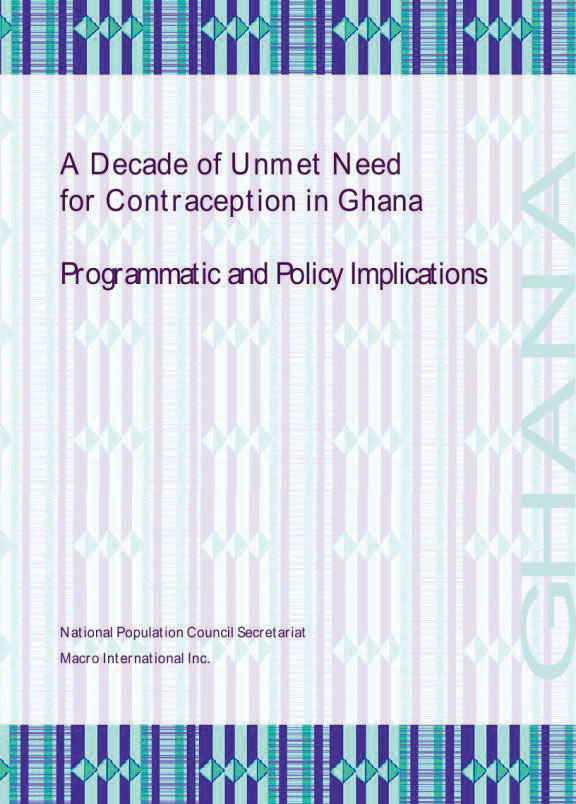- PUBLICATIONS
- JOURNAL ARTICLES
- ORDER PUBLICATIONS
Publications Summary
- Document Type
- Further Analysis
- Country(s)
- Ghana
- Survey
- Ghana DHS, 1998
- Language
- English
- Recommended Citation
- Govindasamy, Pavalavalli and Emmanuel Boadi. 2000. A Decade of Unmet Need for Contraception in Ghana: Programmatic and Policy Implications. DHS Further Analysis Reports No. 31. Calverton, Maryland, USA: Macro International
- Download Citation
- RIS format / Text format / Endnote format
- Publication Date
- August 2000
- Publication ID
- FA31
Download
 A Decade of Unmet Need for Contraception In Ghana: Programmatic and Policy Implications (PDF, 1534K)
A Decade of Unmet Need for Contraception In Ghana: Programmatic and Policy Implications (PDF, 1534K)
Download this publication
There is no printed copy available to order.
